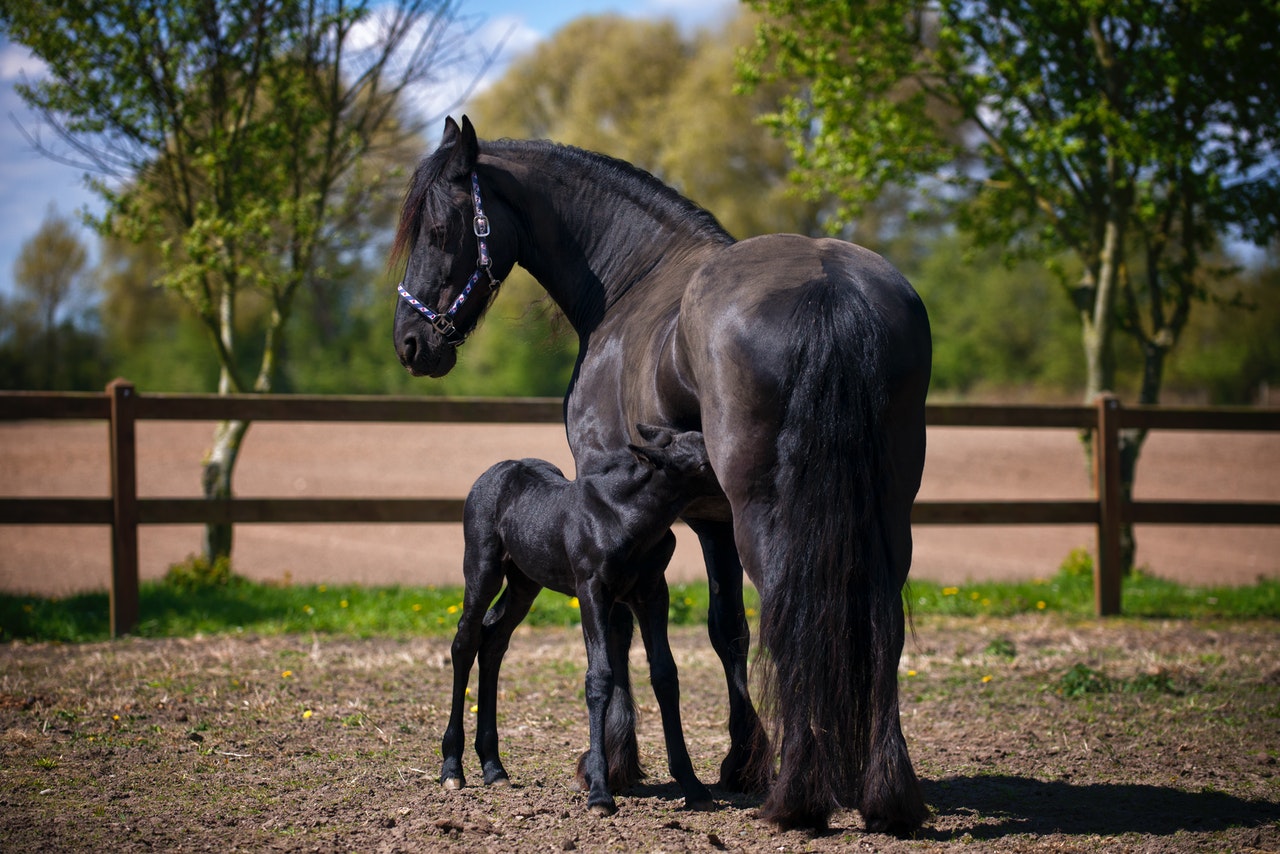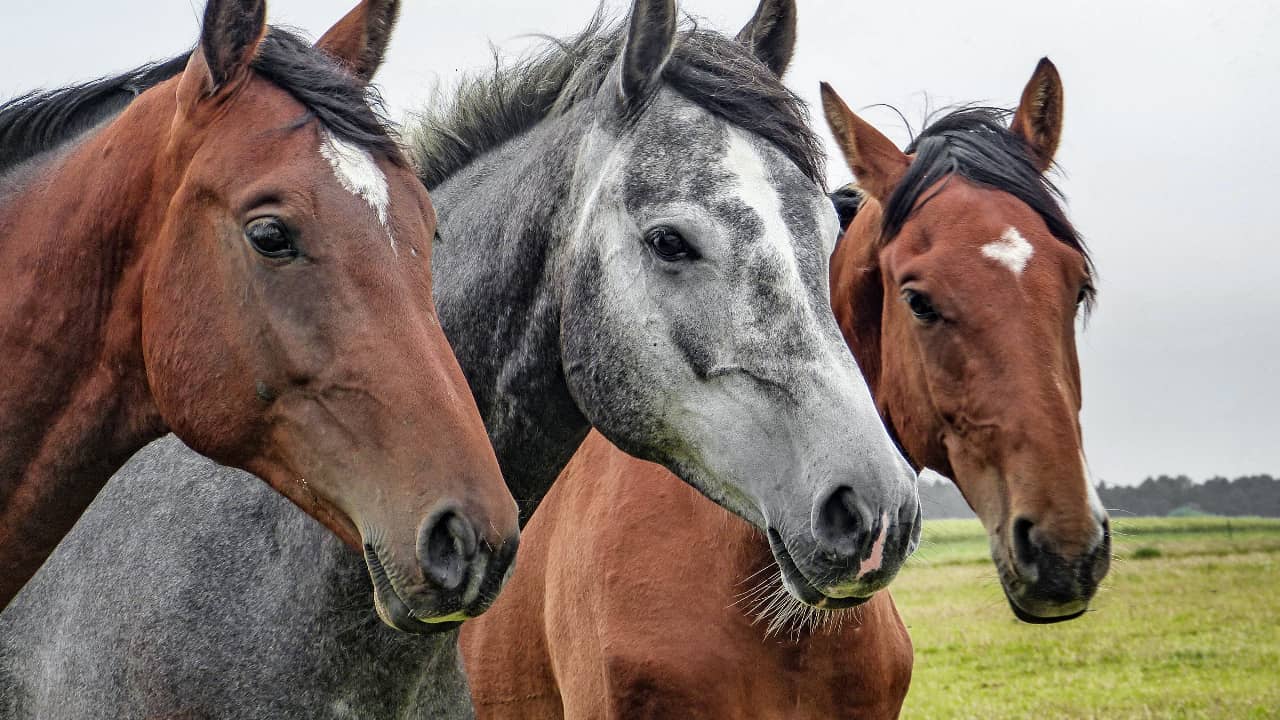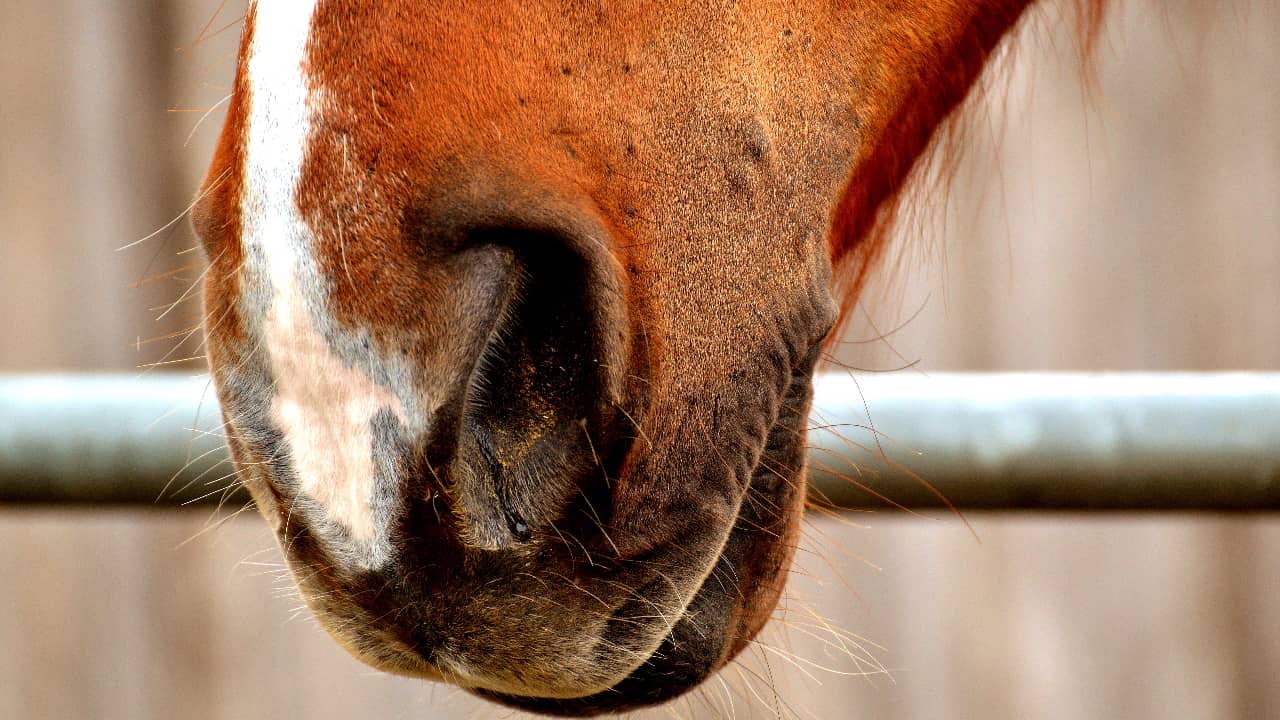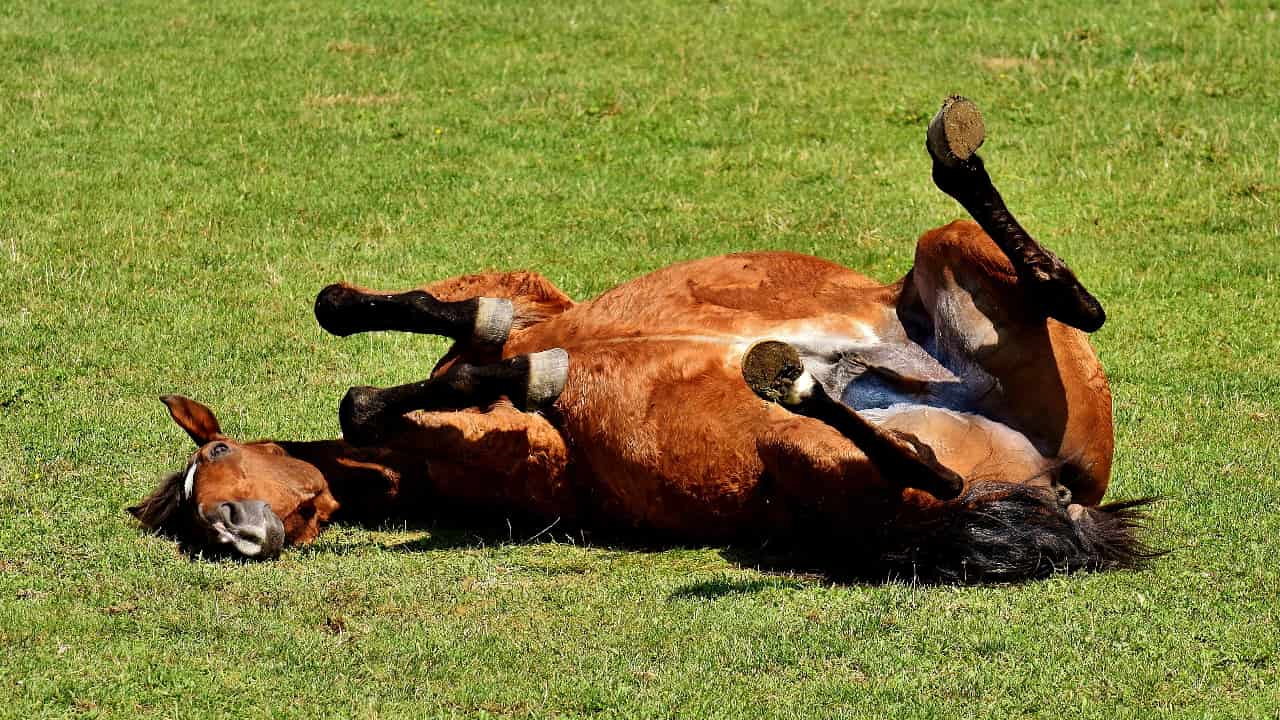Foals are just the sweetest things on earth and, they’re born completely developed. A horse is a prey animal, so they have the best chances of survival when they're born so physically advanced. However, it takes a long time for a baby horse to develop in the womb of a pregnant mare, longer than a human baby. So if you want to know, how long is a horse pregnant for? Take a look at our comprehensive guide about the horse gestation period below.
How Long are Horses Pregnant For?
On average, a horse is pregnant for around 11 months, which is approximately 330 days.
This might seem like a long time, however, a horse is fully formed when it's born and most foals will be walking around within 30 minutes after birth. So this means that they need a little bit of extra time in the womb to develop.
Horse Pregnancy Stages
You can find out if your mare has had a successful breeding with a urine test. And just like humans, horses have three trimesters of pregnancy, and we'll take a look at these below.
First Trimester
The first trimester of a mare's pregnancy starts at conception and ends on day 113. At around 25 days after conceiving, a vet should scan the mare for foetal abnormalities or to see if the mare is carrying twins.
If there are twins, the vet will advise removing the second embryo so the mare just has one foal. A horse will rarely carry twins full term, so it’s better to remove one of the embryos. At 45 to 60 days into the first trimester, the vet can hear the foal's heartbeat. And at 45 to 60 days, the vet can determine the sex.
Second Trimester
The second trimester begins at 114 days and, during this time, the mare will need extra food rations. This is also the time when a mare can be de-wormed, and it’s when they should get their EVH1 (equine herpesvirus) vaccination.
The EVH1 vaccine is essential for any breeding horse as it can cause abortion in horses and they should have it again in the seventh month of pregnancy. At around six months into the second trimester, a mare will start to look pregnant.
Third Trimester
During the third trimester, which starts at day 226, the foal will do most of its growing. This means you'll need to increase the food rations in the mare's diet again to accommodate the fast growing foal. Poor nutrition at this stage in a mare's pregnancy can also lead to reduced milk production.
The mare must be calm and stress-free throughout the third trimester, so she’s relaxed leading up to her due date.
Factors That Effect Gestation Period
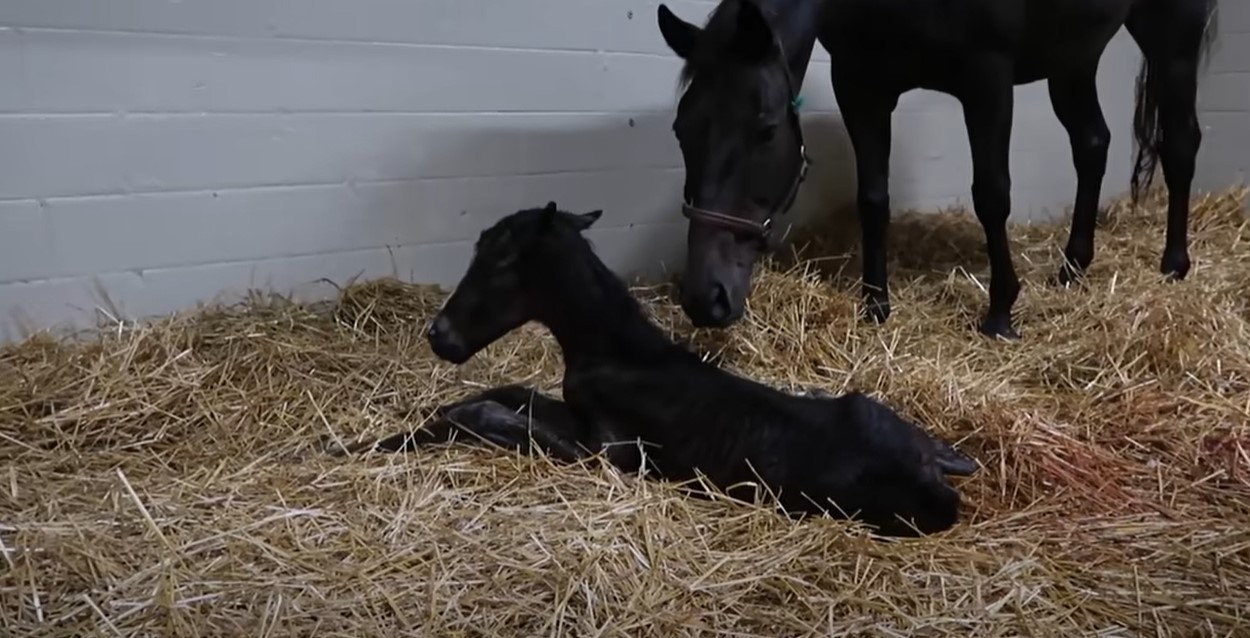
Even though the average gestation length for a horse is 11 months, not all mares stick to this. Gestation lengths can vary. Many mares foal early at ten months, while others, may go up to 12 months. In fact, even if a mare goes up to 380 days, this is considered normal.
A mare bred earlier in the year will often carry over their foal over their due date. While mares mated in the late season will frequently have a shorter gestation period than those bred in the early spring and summer.
Some studies also suggest that colts stay in the womb a little bit longer than fillies. And a malnourished or underweight mare will also tend to have prolonged gestation.
Premature and Overdue Foals
A foal is considered overdue if it’s born before 320 days. Premature foals born between 300 and 320 days will need the support of trained critical care veterinarians in a neonatal intensive care unit in an equine veterinary hospital. And unfortunately, foals born earlier than 300 days will usually die because their respiratory system isn’t fully developed yet.
There are many reasons why a mare might foal prematurely but the most common reason is due to bacterial and fungal infections and viruses. This includes things such as placentitis, equine herpes virus and fescue toxicity which causes a thickened placenta. To avoid fescue toxicity, don't let your mare graze on fescue pasture during pregnancy.
A foal is considered overdue after 370 days. Most of the time being overdue won't cause too many problems, it's simply due to delayed uterine development. Thus, overdue foals tend to be on the small side. In most cases, unless the mare is in danger, veterinarian equine practitioners won't induce labor an overdue mare.
The Horse Breeding Season
Female horses are polyoestrous. This means that, unlike humans, they can only get pregnant at certain times of the year.
In the winter months, a horse is anoestrous which means they don’t ovulate. And in the summer months, most mares have a regular oestrus cycle where they release an egg every three weeks. Scientists believe the reason horses do this is to ensure that they foal in the warmer months when there’s plenty of food around.
Mares will come into season in the early spring, around March. The warm temperatures and extended daylight will prompt her to start breeding. Mares will have a breeding cycle every three weeks until the end of September. And mares are most fertile during the peak summer months.
However, a mare won't be sexually receptive to a stallion throughout the whole of her 3-week oestrous breeding cycle. She will only be willing to mate with him for a period of 5 or 6 days, which are known as the heat cycles. So it's not always easy to get female horses pregnant.
Some breeders and horse owners, particularly thoroughbred racehorse breeders, use artificial light to try and start heat earlier. This is because all thoroughbred foals share the same birth date of January the 1st. So a foal born closer to this date will have a stronger advantage over those born later in the season, as they will race against each other in the same age group.
What are the Signs a Horse is About to Give Birth?
As a mare nears giving birth, she'll show signs she's ready up to two weeks prior to giving birth. First, her udder will swell up with milk and she may develop a yellow crust on her teats. This crust is known as wax. As well as this, her vulva will lengthen, and the area around her croup will sink as the foal gets into position.
Most horses will give birth at night because they’re less vulnerable to predators under the cover of darkness. In the hours leading up to birth, a mare begins to become agitated and restless and will demonstrate nesting behavior.
She’ll walk in circles around the stall and may get up and down a few times. As well as this, she may sweat and paw at the ground and frequently look towards her abdomen. This stage can last for up to two hours.
You’ll know for sure that a mare is giving birth when you see her tail raised and the amniotic sac sticking out of her vulva. The sack should be a healthy white or creamy color to indicate a healthy foal. If it’s red, this means the placenta has detached from the mare's uterus too early and you need to call the vet. At this point, your horse should get down on the floor again because most will give birth laying down.
When to Call the Association of Equine Practitioners for a Pregnant Mare?
Once the sac has ruptured and released the amniotic fluids, it shouldn’t take longer than thirty minutes for the mare to give birth. If after 20 minutes, there’s been no progress with giving birth, you should call your vet for advice. Older mares who've given birth lots of times will usually give birth faster than a mare who is having a foal for the first time. Sometimes they can deliver the foal in just a few minutes.
Post partum care of a foal includes cutting it's umbilical cord which contains the umbilical artery and this is where the blood flows from mare to foal.
Horse Gestation Period - Frequently Asked Questions
How many months is a horse pregnant for?
A female horse is usually pregnant for 11 months. However, it’s not unusual for a mare to give birth at 10 or 12 months. The gestation length can vary greatly between mares. Mares sometimes carry foals longer if they mate earlier on in the breeding season.
How many babies can a horse have at one time?
A horse will generally only have one baby at a time. If a mare has conceived twins, most of the time they won't make it full term. Usually, a mare will abort twins and it's only on rare occasions they'll deliver strong, healthy twins. This is why it’s important to scan your mare in the early stages of pregnancy to check for twins.
Why are horses pregnant for so long?
When a foal is born, it’s fully developed and will be on its feet walking around within 30 minutes. This means they need a little bit of extra time in the womb for development.
Conclusion
So, how long is a horse pregnant for? On average, a horse will be pregnant for around 11 months. However, some mares will give birth before or after this date. As long as the foal is born after 320 days it should be fine. But premature foals, born before 320 days have a low chance of survival. Your mare needs to have regular vet checks and scans during pregnancy so you can have a clear idea of the due date.
